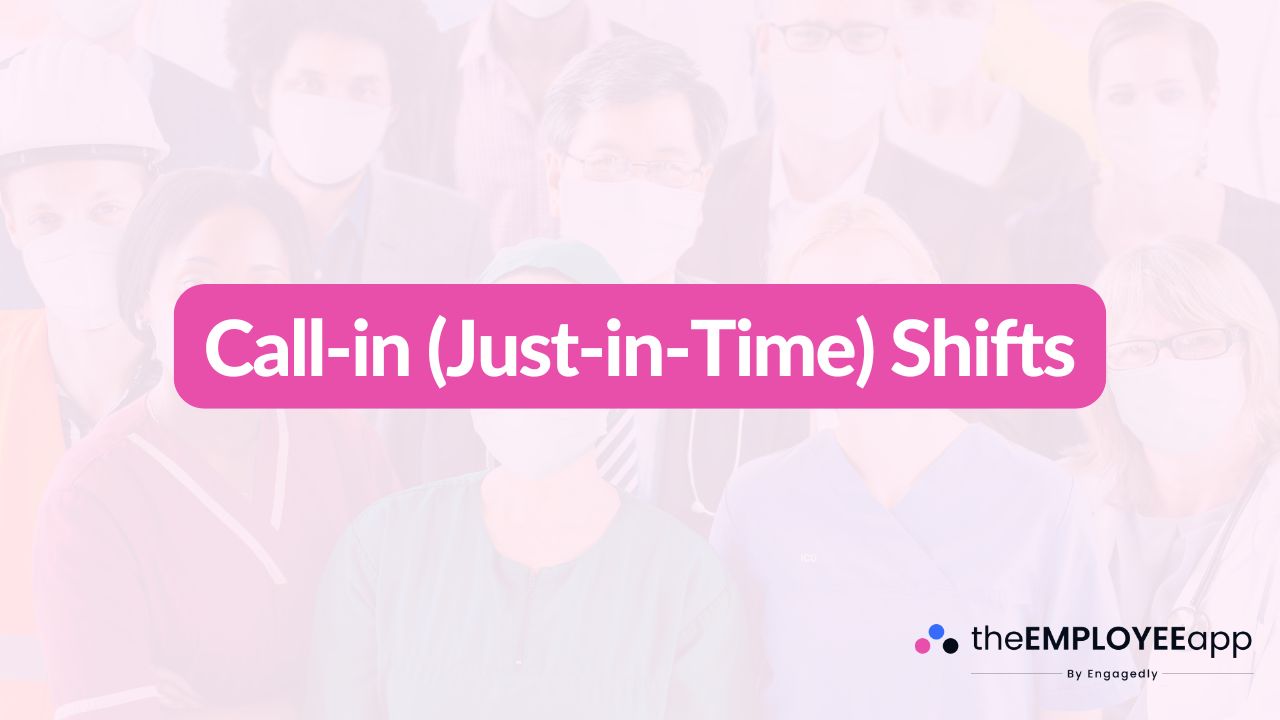
Introduction
Call-in shifts, also known as just-in-time shifts, are a scheduling practice where employees are required to call or check in with their employer shortly before a shift to confirm whether they are needed. This method of scheduling is designed to give businesses more flexibility by adjusting staffing levels based on real-time customer demand or operational needs. While this can benefit employers by reducing labor costs, it also raises important questions about fairness, predictability, and employee well-being.
What Are Call-in or Just-in-Time Shifts?
In a call-in or just-in-time shift system, employees may be assigned a “tentative” shift on the schedule but are only confirmed once they call in a few hours before their start time. If demand is lower than expected, they may be told not to come in, resulting in lost work hours. This system is most commonly used in industries with unpredictable demand patterns, such as retail, food service, and hospitality.
For example, a retail store may schedule additional workers for a Saturday but ask them to call in on the morning of the shift to determine whether extra coverage is necessary. If customer traffic is expected to be low, the employer may cancel some of those shifts.
Why Employers Use Call-in Shifts
From an employer’s perspective, just-in-time scheduling offers flexibility and cost savings. It allows managers to align staffing levels with real-time business needs, preventing unnecessary labor expenses during slow periods. Businesses facing fluctuating customer demand or seasonal peaks often rely on this practice to maintain profitability and efficiency.
Challenges for Employees
While call-in shifts may help organizations control costs, they can create significant challenges for employees. The lack of schedule predictability makes it difficult for workers to plan personal commitments, arrange childcare, or pursue additional income opportunities. Employees may also experience financial instability when expected shifts are canceled at the last minute.
Furthermore, being required to remain available without guaranteed hours can lead to stress, dissatisfaction, and higher turnover rates. In some regions, labor laws are evolving to restrict or regulate call-in scheduling practices to protect workers from unpredictable income and unfair scheduling.
Benefits and Drawbacks
Benefits for employers:
Greater flexibility to respond to changing business needs.
Reduced labor costs by avoiding overstaffing.
Increased efficiency during peak and slow times.
Drawbacks for employees:
Uncertainty in work hours and income.
Difficulty managing personal responsibilities.
Increased job dissatisfaction and burnout.
Best Practices for Managing Call-in Shifts
If an organization uses call-in or just-in-time shifts, implementing best practices can help balance business efficiency with employee well-being:
Provide as much notice as possible: Avoid same-day scheduling changes whenever possible by communicating tentative shifts well in advance.
Offer partial compensation for canceled shifts: Providing some pay for canceled hours can reduce the negative impact on employees.
Use scheduling software: Digital workforce scheduling tools can forecast demand more accurately, reducing reliance on last-minute shift changes.
Be transparent: Clearly communicate scheduling policies so employees understand expectations and their rights.
Prioritize fairness: Rotate call-in shifts evenly across staff to avoid overburdening certain employees.
The Future of Call-in Shifts
With the rise of predictive scheduling laws and worker protection initiatives, many organizations are rethinking just-in-time scheduling practices. Technology is playing an important role in helping businesses forecast demand more accurately, reducing the need for call-in shifts altogether. Instead of requiring employees to remain on standby, companies are turning to mobile scheduling apps, predictive analytics, and real-time communication tools to achieve a balance between flexibility and predictability.
Conclusion
Call-in or just-in-time shifts are a workforce scheduling method that helps businesses adapt quickly to changing demand. However, while this approach may benefit employers by reducing labor costs, it also creates challenges for employees by limiting income stability and work-life balance. By adopting fair practices, leveraging technology, and prioritizing transparency, organizations can minimize the drawbacks of call-in shifts and create a scheduling system that works for both business needs and employee satisfaction.
